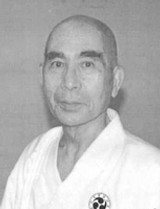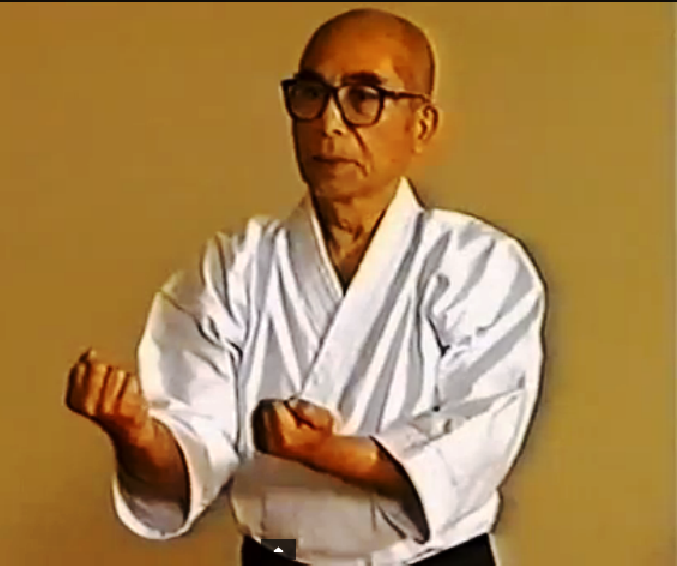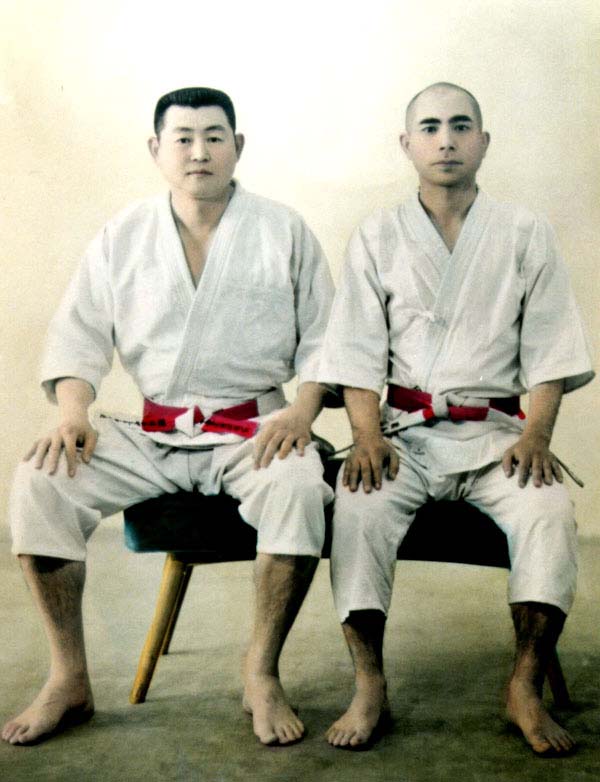“A Walking Encyclopedia Of Martial Arts History”

Hiroshi Kinjo 1919 – 2013
“A Walking Encyclopedia Of Martial Arts History”

Born in Shuri, Okinawa, Kinjo sensei started learning karate from the age of 7 from legendary masters such as Okuzato Shogen, Chinen Sanda, Oshiro Chojo, Maeshiro Chotoku, Tokuda Anbun and Hanashiro Chomo, many of whom were direct students of Itosu Anko.
Kinjo taught karate at Yamanashi University, Ibraki University, Shibaura Technical College, and the Aritomakan.
 The founder of Nihon
Karatedo Kenshukai, he was one of the most famous karate researchers and
authored many books on karate, among which Gekkan Karatedo; Karate no Narai
Kata, Tokyo Japan (1970); Jarate bi Barau Jatam; and his masterpiece Tode kara Karate made
(From Todi to Karate) (2011) and
published in the English language. He
was a diligent energetic author for six decades, and wrote many articles, all
well-researched and balanced in their authenticity and references, and in
imparting his enthusiasm and obligation to provide knowledge of the great
masters to the reader. He acknowledged
the great value of oral tradition, anecdotes, and storytelling, as well as
existing historical and written documentation.
He was a caring sensei, a committed instructor, and a willing partner
with his martial arts colleagues in joint projects and in furthering the
development of the martial arts, and in particular Nihon Karatedo Kenshukai.
The founder of Nihon
Karatedo Kenshukai, he was one of the most famous karate researchers and
authored many books on karate, among which Gekkan Karatedo; Karate no Narai
Kata, Tokyo Japan (1970); Jarate bi Barau Jatam; and his masterpiece Tode kara Karate made
(From Todi to Karate) (2011) and
published in the English language. He
was a diligent energetic author for six decades, and wrote many articles, all
well-researched and balanced in their authenticity and references, and in
imparting his enthusiasm and obligation to provide knowledge of the great
masters to the reader. He acknowledged
the great value of oral tradition, anecdotes, and storytelling, as well as
existing historical and written documentation.
He was a caring sensei, a committed instructor, and a willing partner
with his martial arts colleagues in joint projects and in furthering the
development of the martial arts, and in particular Nihon Karatedo Kenshukai.
His awards were second to none including an instructor’s diploma by Toyama Kanken (1939). In 1948 he was conferred to by Mabuni Kenwa Itosu’s Ten Maxims of Karate, in handwriting by Itosu Anko himself. In 1950, he established the Zen Nihon Karate-do Kenshukai (under the name Otomokai), still in existence today.
In 1945, while the Budo ban was still valid in Japan, the Kanbuken was established for the practice of Karate by top students of Toyama Kanken (1888-1966). Kanken followed a no-style principle, i.e. he did not support ‘style-thinking’ in Karate. While in the Kanbukan Karate dojo in Tokyo, Hiroshi experimented early on with protectors. In 1950, the All Japan JKF Championship was held; however the protective equipment of the time did not sufficiently ensure safety. Hiroshi spearheaded the development of protective equipment as an alternative to kendo armour, and significantly contributed to the first protector Karate championship in Japan in 1954 during which protector rules were used The JFK All Japan Championship continues to hold the protective equipment convention. In 1959, Hiroshi became vice-president, along with Konish Yasuhiro, of the (old) All Japan Karate Federation.
In 2011, he retired from his post as main instructor of his Zen Nihon Karate-do Kenshukai.
Hiroshi Kinjo was also good friends with Master Richard Kim who dubbed him a walking encyclopedia of martial arts history.
